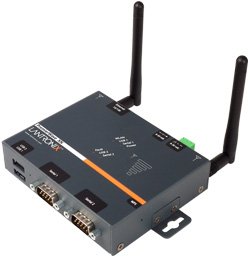The energy created by electromagnetic radiation is generated from the
forces exerted by the variable fluctuations of magnetic and electrical
force fields emanating at right angles to each other traveling at the
speed of light. These electromagnetic disturbances create waves which
can be measured and which occur or pulse at different rates or
frequencies each second. A frequency spectrum is a method of
classifying, by their commonly understood names, the discrete and unique
elements of all electromagnetic occurrences in terms of the frequency
of the radiated energy induced each second. Radio waves, television broadcasts, X-rays, microwaves, and infrared
transmissions are all electromagnetic radiations whose essential
attributes can be defined and identified by the frequency or amount of
radiation each type produces.
Frequency is defined as the number of complete electromagnetic energy wave cycles that occur each second. The international unit of measurement used to describe one cycle is 1 hertz (Hz). Since each portion of the electromagnetic spectrum has a telltale frequency signature, it can be identified by means of a frequency spectrum analyzer that is capable of accurately measuring the wave cycles per second of the particular electromagnetic phenomenon under observation.
Each of the varied forms of electromagnetic energy occupies a designated place on the frequency spectrum. The electromagnetic continuum, as expressed in terms of the frequency or the intensity of radiation emitted by each distinct segment, ranges from 106 Hz up to 1025 Hz. Radio waves occupy the low end of the frequency spectrum whereas radioactive gamma rays occupy the high end. The frequency range encompassed by the electromagnetic spectrum is immense. Frequencies generated by radio transmissions and those produced by visible light vary by an order of magnitude of a million billion.
The frequency spectrum for radio transmissions is further classified into ranges of frequencies or "bands," both as a means for minimizing interference as well as for sharing bandwidth among multiple users. The International Telecommunications Union Agreement allocates certain ranges of radio transmission frequencies so as to minimize interference in the shortwave radio spectrum. The high frequency bands are allocated among international shortwave broadcasters, amateur radio operators, and marine radio communications.
In order to insure reliable, interference-free radio transmissions, domestic governmental agencies often regulate certain aspects of the frequency spectrum. In the United States, the Federal Communications Commission (FCC) allocates the frequency bands between businesses, the general public, and amateur radio operators so as to limit any potential cross-band interference. Each band is designated a specific frequency range, and that frequency spectrum is reserved for each of the various user-specific groups.
Just Hit The Share Button It Doesn't Bite Your Finger
Frequency is defined as the number of complete electromagnetic energy wave cycles that occur each second. The international unit of measurement used to describe one cycle is 1 hertz (Hz). Since each portion of the electromagnetic spectrum has a telltale frequency signature, it can be identified by means of a frequency spectrum analyzer that is capable of accurately measuring the wave cycles per second of the particular electromagnetic phenomenon under observation.
Each of the varied forms of electromagnetic energy occupies a designated place on the frequency spectrum. The electromagnetic continuum, as expressed in terms of the frequency or the intensity of radiation emitted by each distinct segment, ranges from 106 Hz up to 1025 Hz. Radio waves occupy the low end of the frequency spectrum whereas radioactive gamma rays occupy the high end. The frequency range encompassed by the electromagnetic spectrum is immense. Frequencies generated by radio transmissions and those produced by visible light vary by an order of magnitude of a million billion.
The frequency spectrum for radio transmissions is further classified into ranges of frequencies or "bands," both as a means for minimizing interference as well as for sharing bandwidth among multiple users. The International Telecommunications Union Agreement allocates certain ranges of radio transmission frequencies so as to minimize interference in the shortwave radio spectrum. The high frequency bands are allocated among international shortwave broadcasters, amateur radio operators, and marine radio communications.
In order to insure reliable, interference-free radio transmissions, domestic governmental agencies often regulate certain aspects of the frequency spectrum. In the United States, the Federal Communications Commission (FCC) allocates the frequency bands between businesses, the general public, and amateur radio operators so as to limit any potential cross-band interference. Each band is designated a specific frequency range, and that frequency spectrum is reserved for each of the various user-specific groups.
Just Hit The Share Button It Doesn't Bite Your Finger

No comments:
Post a Comment